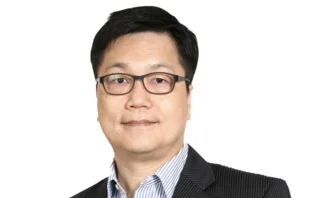
Derivatives pricing and trading system of the year: Murex
Asia Risk Technology Awards 2019

The way front-office activities are initiated and handled has undergone a transformation in recent years. It is no longer enough for an institution to just call a pricing model to make a quote or fire off a trade to the first venue that comes to mind for execution.
Capital cost, counterparty selection and regulation are now critical elements in the decision-making process. Counterparty selection will depend on competitive measures, such as initial margin, various valuation adjustments (XVA) and choice of central counterparty, while regulations such as the Fundamental review of the trading book (FRTB) demand alignment of pricing between front office and risk management.
This evolution of requirements means any pricing and trading technology provider must also give users access to a raft of other analytical functionality, either integrated or via open interfaces. Furthermore, most institutions these days set their pricing and trading requirements within a wider context, such as rationalising internal systems infrastructure and reducing the total cost of technology ownership, increasing automation, decreasing operational risk, or enabling business and geographical expansion.
Murex has made it its mission to keep pace with such industry developments – and one step ahead of its rivals in an intensely competitive field. A measure of its success is the fact that it has won five major new clients in the region over the past year, and numerous existing clients have engaged the firm on upgrade and extension projects. The new clients include four banks and a commodities house in China, Hong Kong, Singapore and Indonesia.
“The four banks are all looking to implement the MX.3 platform across all asset classes and front to back,” says Alexandre Bon, head of marketing and strategy, Apac, at Murex. “By replacing legacy and silo systems in order to equip their trading floors with the best possible solution for business growth, they plan to enable regulatory compliance while eliminating the costs and business pains arising from processes and infrastructure misalignment between departments.”
Projects with existing clients are spread across the region. Take, for example, a Japanese bank that was looking to modernise its analytics and align valuations across front office, finance and risk. It undertook a full evaluation of Murex’s models, with its quants running proof-of-concept validations. As a result, the bank selected Murex for exotic forex derivatives, covering all processes from pricing to real-time portfolio management, risk management and accounting.
This included Tremor 2 – the second version of Murex’s widely used local stochastic volatility model, which captures term structure effects, and spot and volatility dynamics, and fits first- and second-generation exotic market prices. For interest rate derivatives, the Japanese bank selected Murex’s Brace-Gatarek-Musiela two-factor model for exotics with full coverage for pricing, evaluation, risk management and accounting.
The MX.3 single-platform model enables trading desks to align naturally with risk and finance departments in order to optimise capital costs and manage their total cost of trading
Alexandre Bon, Murex
In another project with an Australian bank, Murex developed functionality for intra-day volatility weighting for forex derivatives, which allows fine marking of volatility, taking into account spikes due to market events, such as US Federal Reserve Bank announcements, and their effect on options, depending on their exact expiration time. Overall, more than 50 of Murex’s 60 Asia-Pacific clients use its forex and interest rate derivatives analytics.
“Our strong structuring offering for forex derivatives helped us be selected by a major Indonesian bank that will be using MX.3 to provide their corporate clients [with] structured products hedging instruments, such as call spreads,” says Bon.
This follows the decision in 2017 by the Indonesian financial services authority OJK to allow the use of call spread options, whereas it had previously restricted firms to vanilla forex hedging instruments.
The region’s regulators are steadily implementing the new rules coming out of the Basel Committee for Banking Standards following the global financial crisis.
“These changes are profound and impact the way the different business units of the bank interact. The MX.3 single-platform model enables trading desks to align naturally with risk and finance departments in order to optimise capital costs and manage their total cost of trading,” says Bon.
Meeting deadlines, cutting costs
A number of Murex’s Asia-Pacific clients are taking advantage of the functionality it has developed to enable US and European clients meet earlier deadlines to get a head start on compliance. For example, a Singaporean bank has implemented Murex’s solution for the standard approach to FRTB, paving the way for its intended internal model approach application.
Several clients in Singapore, Hong Kong, Australia and Korea have implemented, or are implementing, bilateral initial margin (IM) calculation on MX.3, including the use of the International Swaps and Derivatives Association’s standard initial margin model across all asset classes.
“This will enable them to control and actively reduce their future IM costs,” says Bon.
Tier 3 or 4 banks, meanwhile, are beginning to look at how digitalisation of their business could cut costs and open new revenue sources. Several of these institutions are adopting the MX.3 price distribution and sales/trader communication module. For example, a Hong Kong bank is using the solution to distribute forex derivatives, cash and bonds to retail, wealth and corporate clients, while Chinese and Malaysian banks are distributing derivatives and cash products to remote branch sales and corporate clients.
“We accompany our Asia-Pacific clients on their journeys, providing our expertise and evolving our platform with them,” says Bon.
An Asia Risk judge says: “Murex has strong analytics plus good coverage of all asset classes, from forex to rates, equity, credit and commodities, with essential front-to-back integration. It has a significant client base in [the] Apac region, covering large and complex institutions, as well as smaller bespoke organisations.”
Only users who have a paid subscription or are part of a corporate subscription are able to print or copy content.
To access these options, along with all other subscription benefits, please contact info@risk.net or view our subscription options here: http://subscriptions.risk.net/subscribe
You are currently unable to print this content. Please contact info@risk.net to find out more.
You are currently unable to copy this content. Please contact info@risk.net to find out more.
Copyright Infopro Digital Limited. All rights reserved.
As outlined in our terms and conditions, https://www.infopro-digital.com/terms-and-conditions/subscriptions/ (point 2.4), printing is limited to a single copy.
If you would like to purchase additional rights please email info@risk.net
Copyright Infopro Digital Limited. All rights reserved.
You may share this content using our article tools. As outlined in our terms and conditions, https://www.infopro-digital.com/terms-and-conditions/subscriptions/ (clause 2.4), an Authorised User may only make one copy of the materials for their own personal use. You must also comply with the restrictions in clause 2.5.
If you would like to purchase additional rights please email info@risk.net
More on Awards
Environmental products house of the year: ENGIE
ENGIE is driving change in energy transition, with a strong focus on renewable energy and the liberalisation of power markets in Apac, which presents significant long-term growth opportunities. In recognition of its efforts, ENGIE GEMS has been named…
Natural gas/LNG house of the year: ENGIE
ENGIE continues to expand its services to better serve firms in Apac dealing with the challenges of energy risk management and supply
FRTB management solution of the year: Bloomberg
Amid the diverging timeframes and complex requirements of FRTB, Bloomberg offers a consistent, comprehensive and customisable solution for Apac banks preparing for implementation
Newcomer of the year: Topaz Technology
Jon Fox and former colleagues formed Topaz Technology in 2015. Having seen many different systems and, in some cases, written and built a few themselves, there was always something missing, leading them to build a system that unifies risk reporting and…
Technology vendor of the year: Murex
As a technology vendor, Murex places adaptability front and centre of everything it does, constantly enriching its MX.3 platform to ensure institutions can respond to new market opportunities as soon as they spot them
Currency derivatives house of the year: Deutsche Bank
Asia Risk Awards 2024
Interest rate derivatives house of the year: Standard Chartered Bank
Asia Risk Awards 2024
Derivatives house of the year, Taiwan: CTBC Bank
Asia Risk Awards 2024







